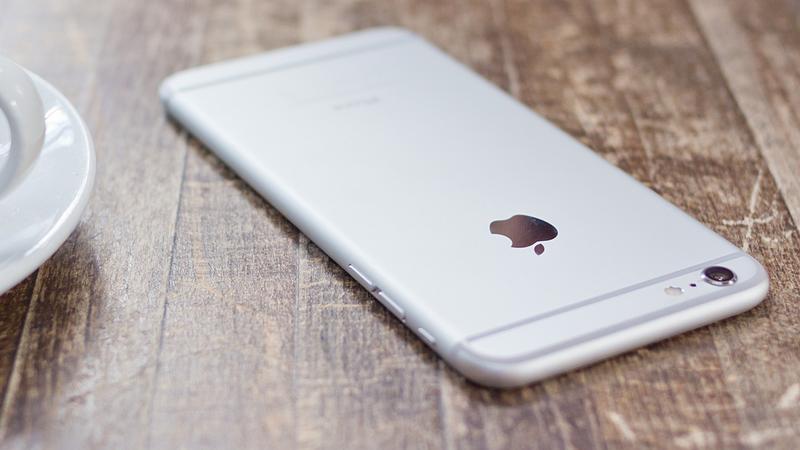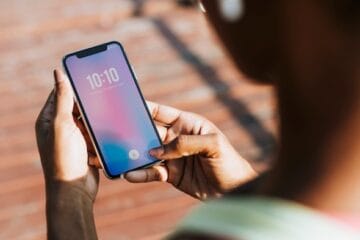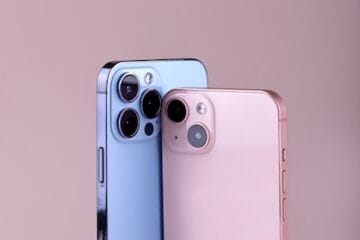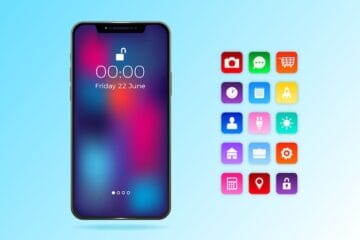
The iPhone 7 has only recently been announced, but all we seem to be hearing are rumours about the iPhone 8. We think Apple might well be holding back some major updates and improvements for the iPhone 8, which will be launched on the 10th anniverary of the first iPhone. Here we round up the rumours about the iPhone 8 release date, features and specifications. See also: Best phones 2016.
Hang on a minute, shouldn’t the next iPhone be the iPhone 7s? Well, technically, yes. But this one is said to be such a big and important upgrade that we can’t see Apple giving it anything other than a new number. There are some rumours the next iPhone could even be called simply The iPhone, or iPhone Pro, but for now we’ll stick to calling the 2017 iPhone the iPhone 8.
Pixel, Phone By Google – Now Available Exclusively On A Choice Of Networks. .
Latest update: There’s more rumours suggesting the iPhone 8 will get wireless charging – read more.
Contents
iPhone 8 release date rumours: When is the iPhone 8 coming out?
iPhone 8 UK release date: September 2017 (TBC)
It’s a bit early to talk about the iPhone 8 release date. It’s not necessarily even going to be called that. However, for now that’s the name we’re using to keep things simple and the iPhone 8 will be the new flagship smartphone for Apple in 2017.
If tradition continues, the iPhone 8 release date will be in September 2017.
However, the release date isn’t quite as easy to predict as normal. 2017 marks the 10th anniversary of the original iPhone launch, so we wouldn’t be too surprised if Apple mixed things up a bit.

iPhone 8 or iPhone 7S or something else? What will the iPhone in 2017 be called?
It seems the name may have been confirmed with an Apple employee referring to the new device by the name ‘iPhone 8’ unprompted when speaking to Business Insider.
As we’ve mentioned, the iPhone for 2017 is unpredictable because it will mark a big anniversary for the smartphone.
The Wall Street Journal says: “Apple plans bigger design changes for 2017, the 10th anniversary of the original iPhone. Those changes could include an edge-to-edge organic light-emitting diode, or OLED, screen and eliminating the home button by building the fingerprint sensor into the display, according to people familiar with the matter.
“At a meeting with an Apple executive, one of the company’s China-based engineers asked why this year’s model [the iPhone 7] lacked a major design change in keeping with Apple’s usual two-year cycle. The answer, one person at the meeting recalled, was that the new technology in the pipeline will take time to implement. People familiar with the matter said some features that Apple hopes to integrate into iPhones, such as curved screens, weren’t ready for this year’s models,” it added.
Content continues below
If Apple follows the usual pattern, the iPhone 7 that launched this year will be followed by the iPhone 7S in 2017. The fact that it’s 10 years since the original iPhone means this could all go out the window. Apple will want to do something special to celebrate the occasion so an ‘S’ model, which usually just brings small tweaks, won’t suffice.
It’s pretty much anyone’s guess at the moment, hence, we’re calling the 2017 model the iPhone 8 at the moment but it’s perfectly plausible that the new phone won’t conform to the traditional naming system at all. The iPhone SE (special edition) is already a thing, so perhaps Apple will go with ‘iPhone Pro’, iPhone Anniversary Edition’ or even just ‘iPhone’ – although naming the iPad 3 as ‘the new iPad’ didn’t go down too well.
A report from Nikkei suggested that in 2017 there would be three new iPhone models. It sounded as though we were in for the usual 4.7- and 5.5in models (the regular and Plus), plus a third new ‘Pro’ model with a 5.5in or above curved screen. Its source said the screen would be “bent on the two sides” making it sound like a Galaxy Note 7 rival. Of course, this didn’t happen with the iPhone 7, though it doesn’t mean we won’t see a curved-screen iPhone 8.
Vote in our poll to let us know what you think Apple will name the iPhone next year.
iPhone 8 price
We’re speculating for now, of course, as the iPhone 7 has only recently gone on sale. Whether Apple will introduce a price increase for the potentially special iPhone 8 is anyone’s guess. However, the iPhone 7 price jumped up to £599 in the UK thanks to Brexit and we hope that it will stay the same with next year’s anniversary model.
iPhone 8 specs and new features
If Apple does indeed do something special for the iPhone’s 10th anniversary, which seems likely based on iPhone 7 rumours, the iPhone 8 will be one which fans will no doubt want to upgrade to on launch day. Could we see the biggest queues ever?
A combination of design and hardware changes will make the iPhone 8 the most radical new iPhone to date, if we are to go by the rumours and leaks.
iPhone 8 screen
Update 4 November: We wanted to bring your attention to a phone which might provide a glimpse of what the iPhone 8. Xiaomi has announced the Mi Mix which is, let’s face it, a stunning device. It looks like the first of a new category of phones with it’s 91.3 percent screen-to-body ratio, according to the firm.

Update 28 October: A recent Facebook post by Robert Scoble – a well-known tech strategist – reveals new details about the next iPhone. In the lengthy post Scoble claims to have been told that it will be “a clear piece of glass… which will put holograms on top of the real world like Microsoft HoloLens does”. He also says the phone will have an OLED screen and that Apple has 600 engineers working on a next-generation 3D sensor and that the phone will have eye sensors. These will bring “a new kind of interface”. He also says that you’ll “pop it into a headset which has eye sensors on it, which enables the next iPhone to have a higher apparent frame rate and polygon count than a PC with a Nvidia 1080 card in it.”
Plus, he says that new sources revealed we can “expect battery and antennas to be hidden around the edges of the screen, which explains how Apple will fit in some of the pieces even while most of the chips that make up a phone are in a pack/strip at the bottom of the phone.”
These sound like ridiculous predictions, especially the part about the phone being transparent – battery tech is not yet good enough to make one small enough to “hide” – but if true, the iPhone 8 will be a revolution rather than the evolution we’ve seen with the iPhone 7 this year. We’ll continue to update this article as new information appears, but here’s how things stand right now.
Jony Ive has wanted to introduce an iPhone which resembles a single sheet of glass for a long time and the 2017 anniversary iPhone could be the one. It’s rumoured that at least one iPhone in 2017 will use a glass body, according to Apple supplier Catcher Technology. Glass on the front and back would make it like a hugely updated version of the iPhone 4S.
This, combined with the rumour that the iPhone 8 will sport an edge-to-edge OLED screen makes things rather interesting. And we’re not just talking the side edges, as Apple may even go as far as to do away with the top and bottom bezels. The physical home button would be gone and the TouchID fingerprint scanner would be housed within the screen.
A patent filed back in March 2015 states: “The man-machine interface device comprises an electronic display apparatus that is capable of presenting graphic text, images, icons, and other data typically shown on a screen, while further including a transparent finger touch sensor region that is seated above the display apparatus.”
A patent has now been awarded for a ‘capacitive fingerprint sensor including an electrostatic lens’. This gets around the problem of an all-glass display and no physical home button with capacitive sensing technology working through gaps in space allowing a Touch ID component to operate below the iPhone’s screen.
The concept video shown below is from DeepMind and shows what an iPhone would look like with an edge-to-edge display. And it looks pretty cool.
Another concept image of an iPhone with an edge-to-edge dlay emerged in early 2016 from iPhone-Tricks.com. It’s a bit out-there and is unlikely to be quite accurate, but it also shows what iOS 10 might look like including an interesting idea that some of the icons could be bigger in a ‘widget’ style familiar to Android users.

Using a flexible OLED display technology will allow the iPhone 8 to be thinner and give a similar effect to the Samsung Galaxy S7 edge. It should also consume less power while offering better contrast and colour reproduction. Apple already uses an OLED display for the Apple Watch.
Reports say Samsung Display is currently working on a new flexible OLED for the iPhone and is set to invest billions in a new factory to keep up with demand and meet Apple’s order of up to 45,000 panels per month.
This concept image via ConceptsiPhone shows what an edge-to-edge OLED display iPhone might look like:

A new patent award to Apple is further indication, some might say proof, that the iPhone 8 will ditch the home button for a system which placed the fingerprint sensing technology underneath the screen. Named a ‘capacitive fingerprint sensor including an electrostatic lens’, it means Apple is looking into a fingerprint sensor which can work through various layers of the display.

Another patent, via Apple Insider, shows that we the iPhone 8 might actually look like the ambitous concept above. With not only the home button moving to the screen, Apple will also need to tackle the light sensor. Well the below patent called ‘Electronic Devices With Display-Integrated Light Sensors’ will do exactly that.
The patent explains that having a light sensor can result in an increase in the size and weight of the device so “it would therefore be desirable to be able to provide improved electronic devices with light sensors and displays.”

As pointed out by Patently Apple, the firm has filed and been granted patents which may well be used on the 2017 iPhone. They suggest a curved-glass design and also that the sides of the phone could be used for virtual active buttons. For example, this could be used for certain controls when the camera app is in use. If true, the phone would rival Samsung’s edge screen features.


There were also some rumours we heard about the iPhone 7’s screen that never made it to fruition. It’s possible that they could see daylight with the iPhone 8.
Economic Daily News speculated that the iPhone 7 could feature a 3D display, and one that doesn’t require the use of those annoying 3D glasses. The website claimed at the time that Apple supply chain partner TPK is working on a project that could produce a glasses-free 3D display, though we’re not holding out much hope for this as its been done before (remember the LG Optimus 3D?) and has never done well.
There were also some rumours to suggest that the iPhone 7 could have a sidewall display, similar to that found on the Galaxy S7 edge and Note 7. This came from an Apple patent that was published in 2015. The patent hints at a future iPhone with a display that extends onto the sides of the device, providing interactive or touch sensitive portions that give access to slide-to-unlock functionality, music player controls, messaging readout, called ID, system controls and more.

[Source:-PC Advisor]




